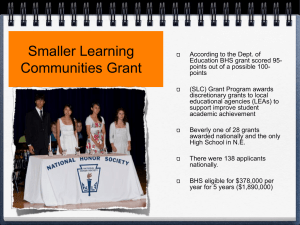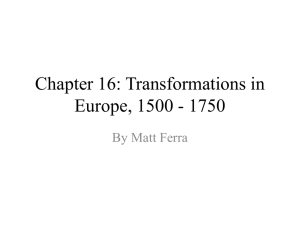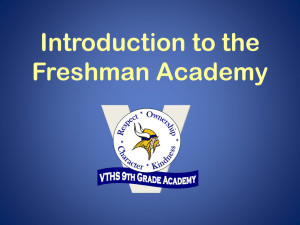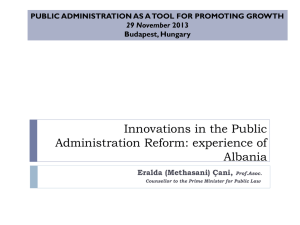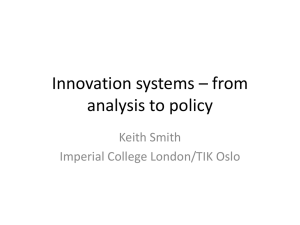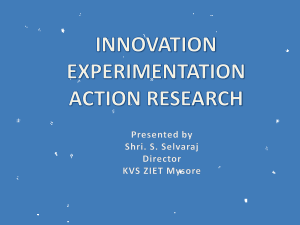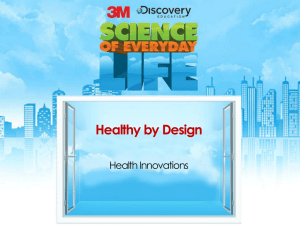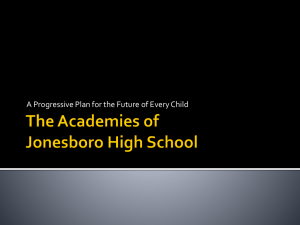Medical Education 50 Years Ago, Today and Tomorrow
advertisement
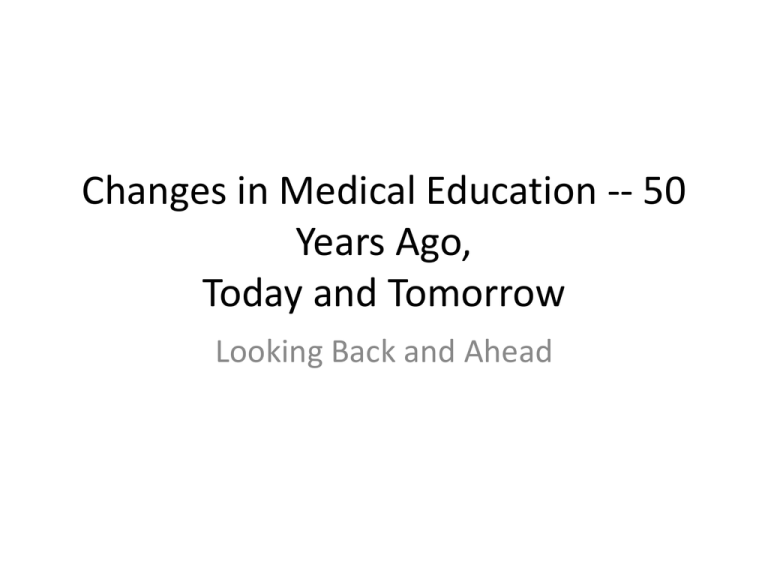
Changes in Medical Education -- 50 Years Ago, Today and Tomorrow Looking Back and Ahead CONGRATULATIONS TO OUR NEW MEMBERS • “ There are two kinds of people; those who do the work and those who take the credit. Try to be in the first group; there is less competition there.” – Indira Gandhi GOALS OF THE ACADEMY OF MASTER EDUCATORS • RECOGNIZE AND REWARD OUTSTANDING EDUCATORS • Support faculty development for education • Promote the academic advancement of educators • ENCOURAGE IMPLEMENTATION OF INNOVATIVE EDUCATIONAL PROJECTS • Promote curriculum design and reform; • Foster educational scholarship and research In this talk I aim to …… • Reflect on medical education when I was in medical school • Contrast my experience with our current educational program • Think about medical education of the future • Provide a few ideas for innovations in hopes that they will stimulate you to -• Develop your own ideas and help put them into practice working through your Academy Think back to 1951 TIME MAGAZINE July 16, 1951 Korean War continues Harry Truman was President Will there be a polio epidemic in 1951? The National Foundation for Infantile Paralysis said the U.S. must raise its idea of “normal” polio incidence from about 10,000 a year to perhaps 30,000”. (Actually 28,000 new cases were reported.) Freshman Class at UTSW, 1950 8 Freshman Class at UTSW, 1950 10 Freshman Class at UTSW, 1950 12 Freshman Class at UTSW, 1950 14 Medical Education 50 Years Ago and Now Then Now • Fewer lectures – streaming! • Lectures all morning , six • Fewer laboratories days a week • Laboratories all afternoon , • Clinical approach to basic (only 4 days a week) sciences including “dog labs” as well • Several small group sessions as anatomy, biochemistry • Problem-based learning and others • No clinical experiences until • Team based learning physical diagnosis at end of • Introduction to Clinical 2nd year Medicine Medical Education 50 Years Ago and Now THEN • Long clinical rotations filling 3rd and 4th years (e.g. 5 months of Medicine in the 3rd year • More direct hands-on experiences such as first assistant at surgeries • No electives • Summer vacations NOW • Evidence based medicine • Standardized patients and simulations • Scholarly concentrations • Emphasis on competence • Shorter required clinical rotations • Many electives including one in 3rd year “New Flexner Report” 101 Years Later General Recommendations 1. Standardize learning outcomes but individualize processes 2. Provide early clinical immersion and later revisiting of the basic sciences 3. Develop habits of inquiry and selfimprovement 4. Address professional identity formation explicitly (Cooke, Irby and O’Brien) Some Possible Ways for the Academy to Support Expanded and New Educational Efforts PARTICIPATION IN ONGOING EFFORTS Curriculum Integration A. Students are the only ones who know our educational program in detail. Develop a presentation to inform faculty about the content of our curriculum B. Curriculum mapping (see Len Cleary) C. Fostering interactions between pre- clerkship courses and clinical years Participation in Ongoing Efforts (cont.) Support scholarly concentrations. Increase the number of them; assist the faculty in developing appropriate learning objectives. Develop a scholarly concentration in medical education. (MU) Provide your own ideas about how you can support these ongoing educational efforts DEVELOP BRAND NEW INITIATIVES “Every really new idea looks crazy at first” Alfred North Whitehead _______________________________________ Develop a longitudinal clinical experience throughout the four years . For example students follow a family from matriculation until graduation Innovations (continued) Imagine (and implement) an educational program with no or few lectures(JMcM) Encourage students to develop pathophysiology learning modules centered on real patient problems(JMcM) Innovations (continued) • Following the lead of other medical schools develop 4 to 8 student academic societies to provide a smaller community where everyone feels heard. These societies could provide academic and personal advising, career planning and a social unit. Innovations (continued) Evaluate and improve the teaching of evidencebased care : Determine and assure the appropriate use of the electronic medical record by students Assess the educational advantages and disadvantages of computerized decision support systems Innovations (continued) Define and explore the role of “critical thinking’ in medical education It’s a hot topic in medical education and is the has been a topic of a recent Millenium Conference sponsored by the AAMC and the Shapiro Institute in Boston One Definition: “Doctors thinking about how doctors think using the formal approaches of logic” Innovations(concluded for now) MOST IMPORTANTLY: Develop and share your own ideas. HINT “The best way to have a good idea is to have a lot of ideas and throw the bad ones away” --Linus Pauling What next? Join with other members of the Academy to share your ideas and develop ways to implement them. Contact Margaret Uthman who chairs the Development Committee or Gary Rosenfeld our President to find out how the Academy can help implement your ideas.

